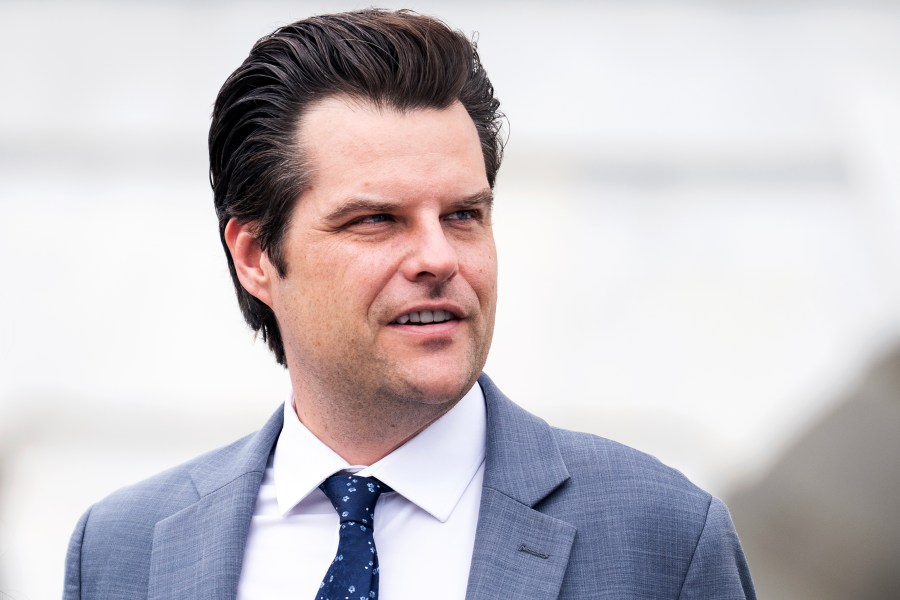
Federal workers brace for Trump overhaul of civil service
President-elect Trump’s plans to reshape the federal workforce would allow him to fire wide swaths of career employees and replace them with political appointees — a move that comes as he has demanded loyalty at every level of government.
Trump has said he will reissue an order released in the waning days of his first administration that ends merit-based hiring for a number of federal jobs that work on policy, instead creating a new class of federal employees — Schedule F — that could be hired and fired just like political appointees.
It’s sparking alarm among federal workers, who see it as a way to insert politics into government actions, a move that could both reward Trump allies and politicize government decision-making.
“I think there would probably be an exodus, because federal employees just want to do their jobs. They want to do the job according to law and regulation,” Jacqueline Simon, policy director of the American Federation of Government Employees.
“They do not want to be political appointees. They don’t want politics to interfere with any aspect of their job.”
Agencies across government are headed by political appointees tapped by the president, but the bulk of work is carried out by nonpartisan staffers hired for their expertise. But Trump allies have envisioned a massive expansion of the number of political positions, jumping from roughly 4,000 currently to about 50,000.
Ronald Sanders, the Trump-appointed chair of the Federal Salary Council during his first administration, resigned over the matter when Trump first moved to roll out Schedule F in 2020.
“When I talked to folks in the first Trump administration, it became clear to me that they were really after political loyalty,” he said, not flexibility or “ensuring greater accountability” as the initial order stated.
“If you put them in because they’re loyal to you and they’ll tell you what you want to hear … you’ve got an army of suck ups. That’s not a good thing. You want civil servants to be able to speak truth to power and not have to fear for their jobs.”
Simon laid out a suite of examples where politics could taint important government decisions — everything from how environmental regulations are crafted to whose taxes the IRS reviews to which businesses are cited for violating regulations.
“We got regulations having to do with trying to keep the air clean, the water safe to drink, air safe to breathe. And either in terms of research or in terms of enforcing existing regulations, or even weighing the regulations, is your goal is clean air, clean water, or is your goal to please political patrons who want to pollute?” she asked.
“You want people collecting the data on inflation or economic growth or any of that kind of stuff — don’t you want objective data that’s accurate? Or do you want politicized data?”
Trump’s October 2020 order found that “conditions of good administration make necessary an exception to the competitive hiring rules” and that departments needed to be able to hire people “without the limitations imposed by competitive service selection procedures.”
Project 2025 argued that the government has a “career-first policy” mentality, noting “frustrat[ion] with these activities by top career executives” as a motivator behind Schedule F.
A current Biden administration appointee who deals with federal personnel matters said the order is sure to sideline career staff while blinding the government to needed information.
“Even if you don’t think having a professional civil service is important, there are some fundamental tenets to decision-making. Pick up any edition of the Harvard Business Review, and they’ll talk about how decision-makers need to look at issues from every possible angle, how they need to have the best unbiased information,” the official said.
“And so if you’re going to make smart decisions, this is just the completely wrong direction to take. You want people to challenge your thinking, You want people to do the kind of research that will get you the best possible current information on a topic. And to just, with the stroke of a pen, dismiss all of that to make it easier to get your way is just incredibly wrongheaded.”
Trump has said he wants to shut down the Department of Education and would likely use Schedule F widely at a number of key health and environmental agencies.
His nominee to lead Health and Human Services, Robert F. Kennedy Jr., has also suggested clearing out entire departments at the Food and Drug Administration.
Project 2025 specifically lists the U.S. Agency for International Development (USAID), which oversees much of the county’s foreign aid, as an ideal department to “pilot-test a reinstated” Schedule F.
Project 2025 also noted other ways it could boot employees from the agency without changing their classification, referring to the “mobilization” requirement of those in the Senior Executive Service (SES), the highest ranking civil servants.
“It means under penalty of removal, you can be resigned anywhere, not just organizationally, but geographically,” Sanders said.
“They can be reassigned tomorrow. You don’t need to fire them. You just reassign them and take the vacancy and put whoever you want in it.”
Project 2025 suggests this exact move at USAID “to encourage the regular rotation of senior career leaders, including through details to other departments and agencies” — raising the prospect of pushing people into entirely unrelated roles.
The idea pops up elsewhere in the nearly 1,000-page document, including at the Environmental Protection Agency (EPA), where it says the agency could “benefit greatly from the reshifting of SES employees to different programs and from headquarters out to regional offices.”



